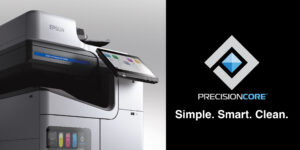Why Is Nobody Talking About ENERGY STAR Certification Anymore? (The Importance Remains)

Is ENERGY STAR Certification Still Relevant in 2025?
ENERGY STAR used to be everywhere. Office equipment flyers boasted the logo, RFPs called for it by name, and IT buyers used it as a shorthand for efficiency.
But lately? Crickets.
With sustainability now baked into the conversation and newer buzzwords—“carbon neutral,” “zero emissions,” “eco-mode”—dominating brochures, many assume ENERGY STAR is old news.
That assumption is not just wrong—it’s expensive.
In this blog, we’ll explore why ENERGY STAR-certified devices still carry real business weight in 2025. From lowering operational costs to qualifying for rebates and ESG reporting, the blue badge still delivers measurable ROI—and often separates smart buyers from the rest.
What Does ENERGY STAR Certification Actually Mean?
ENERGY STAR is a program administered by the U.S. Environmental Protection Agency (EPA). For printers, copiers, and MFPs (multifunction printers), ENERGY STAR certification means:
- Lower energy consumption in both active and sleep modes
- Faster transitions to low-power states
- Smarter network wake features to avoid wasted power
- Ongoing compliance with the most current version.
Certified devices are independently tested and verified. This isn’t self-reported marketing—it’s verified performance. The criteria are periodically tightened as technology evolves, ensuring that ENERGY STAR remains a mark of leadership in energy efficiency.
So Why Aren’t We Talking About It Anymore?
A few reasons:
1. Sustainability Fatigue
Green terms have become so widespread they’ve lost meaning. Words like “eco-friendly” are now seen as vague. ENERGY STAR—despite its credibility—gets lumped in with less rigorous claims.
2. The “Everything Is Efficient” Myth
Some buyers wrongly assume all modern printers are efficient. They’re not. Many budget models or legacy devices still fail ENERGY STAR’s benchmarks. Certification is not guaranteed.
3. Focus Shift to Security and Cloud
Today’s decision-makers are laser-focused on cybersecurity, remote access, and workflow automation. Print security threats and integration questions often overshadow sustainability in purchase discussions.
But none of this makes it less important. In fact, it’s more relevant now, because the stakes are higher.
ENERGY STAR in 2025: More Than Just Energy Savings
If you’re refreshing your print fleet, here’s why ENERGY STAR should still be a core part of your checklist:
✅ Lower Operating Costs
ENERGY STAR-certified printers typically use 20–30% less energy than non-certified models. For organizations running multiple devices across departments or locations, that adds up fast.
✅ Stronger ESG Reporting
This certification is a recognized benchmark for sustainability. It aligns with goals for:
- LEED points
- GHG reporting
- ESG disclosures in annual reports
It’s not just a feel-good badge—it’s documentation-ready data.
✅ Improved User Experience
Certified devices sleep smarter. They enter low-power mode faster and wake up quicker, which means fewer delays for users and less downtime for IT.
✅ Access to Incentives & Rebates
Many utility companies offer rebates for energy-efficient devices. Additionally, it is often a requirement in federal, state, or institutional RFPs.
Buying non-certified gear might knock you out of eligibility entirely.
The Doceo Difference: ENERGY STAR as a Standard, Not a Bonus
At Doceo, we believe ENERGY STAR compliance isn’t a nice-to-have—it’s a must-have.
That’s why every brand we represent includes ENERGY STAR-certified models. We offer:
- Toshiba, Canon, Epson, and Xerox A3 copiers/MFDs
- Lexmark A4 desktop printers
Each of these manufacturers provides ENERGY STAR 3.1-certified devices, and we triple-check model compliance using the official ENERGY STAR product database. No guesswork. No assumptions.
So when building your print environment with Doceo, you’re building for energy savings, operational efficiency, and verified sustainability from day one.
What to Ask Before You Buy
Don’t get fooled by vague eco-labels. Ask these direct questions before you purchase:
- Is this device ENERGY STAR 3.1 certified?
- What are the actual sleep and wake power consumption levels?
- Does it qualify for any local or federal incentives?
- Can I verify the model on the ENERGY STAR website?
If the answer to any of those is uncertain, hit pause.
Doceo doesn’t let our clients guess—we handle the vetting for you.
ENERGY STAR and the Bigger Business Picture
| Business Objective | Benefit |
|---|---|
| Budget Efficiency | Cuts electricity use and cooling loads |
| ESG Compliance | Easily documented sustainability progress |
| IT Support Reduction | Smarter sleep/wake = fewer helpdesk tickets |
| RFP/Grant Eligibility | Meets procurement and rebate requirements |
Still Not Sure if Your Fleet Is Compliant?
If your current printers are:
- More than five years old
- Lacking documentation
- Consuming more energy than expected
…it’s time for a print environment assessment. We’ll inventory your devices, check for energy-efficient models, and identify which units are costing you more than they should.
Bottom Line: Don’t Confuse Quiet with Obsolete
This may no longer be headline news, but its value hasn’t diminished. If anything, in today’s ROI-focused, ESG-aware business climate, it matters more than ever.
And if your print partner isn’t prioritizing energy efficiency, they’re not looking out for your bottom line.
Ready to Upgrade Your Print Fleet with ENERGY STAR Confidence?
Doceo makes it easy. We don’t just sell you printers—we guide you through smarter, verified purchases that lower costs and support your broader goals.
📞 Call us at 888-757-6626
👨💼 Talk to a Doceo expert and audit your print environment today.
Doceo – Proven Technology. Proven People.


